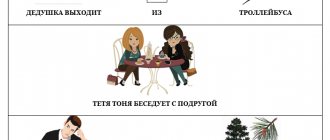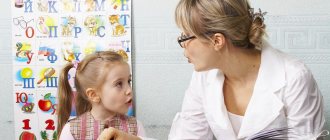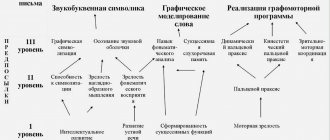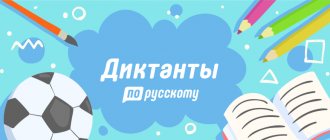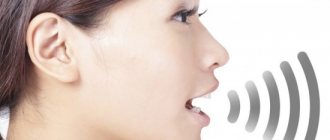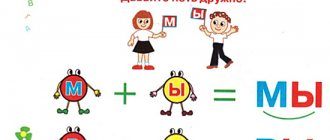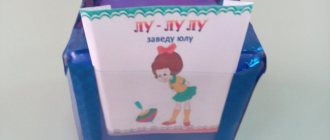Album of onomatopoeia and words for working with speechless children; educational and methodological material on the topic
Album
onomatopoeia
and words
PAGE I - PHOTO OF PARENTS.
Suggested instructions and questions:
- - Show mom (dad).
- Give mom (dad) a toy (car, doll).
- Hide mom (dad) (encourage the child to cover the indicated photo with his palm or a sheet of paper).
- - Who is this?
- Give mom (dad) a toy (encourage a voluntary or reflected statement: “Mom, here!”).
- Who's hiding? (One of the photographs is covered with a sheet of paper.)
- Do you see dad? Do you see mom? (The adult encourages the child to voluntarily pronounce the words “yes”, “no” or a sound complex that replaces them).
- “The fingers ran” to mom (dad) (encourage the child to move his hand in a given direction).
PAGE II - SOUND IMITATIONS “AU”, “UA”.
Suggested instructions and questions:
1. - Show me the girl. The girl got lost and called: “Ay! Aw!”
- Show me the baby. He cries: “Wow! Whoa!” {The adult encourages the child to use reflected onomatopoeia)
2. - Hide the girl (baby). How does she scream? (Encourage the child to cover the picture with his palm).
- Who's hiding? How does he scream? (One of the pictures is covered with a sheet of paper.)
- Do you see the girl (baby)? (The adult encourages the child to voluntarily pronounce the words “yes” and “no”).
3. - Put a toy for the girl (use a small toy).
- What's her name? (Encourage voluntary or reflected onomatopoeia).
- Give the baby a toy. How does he ask?
- - “Fingers ran” to the baby (girl). (Encourage the child to make voluntary or combined hand movements in a given direction).
- — The girl called the baby. How? Take the baby to the girl.
— The kid called the girl. How? Take the girl to the baby.
(The child moves his hand or fingers in a given direction from picture to picture).
6. Teach the child to include practiced onomatopoeia in literary texts (poems, stories): the adult reads the poem several times, emphasizing the onomatopoeia intonationally and encouraging the child to pronounce them in conjunction. An effective technique is for the child to repeatedly listen to a tape recording of a poem or short story performed by an adult.
| UA | Our baby screams in the morning: Wow - wa, wa - wa! | Mom had a little son. His name was Alyosha, Alyosha knew how to say: “Wa-wa!” He wants to call his mother and shouts: “Wa-wa!” He is happy about the toy and says: “Wa-wa”! Asks for food: “Wa-wa!” And if he wants to sleep, you can hear the words from him: “Wa-wa!” |
| AU | We got lost in the forest, everyone shouted: Ay-ay-ay! We'll go into the forest and call the guys loudly: Ay - ay - ay! | Once upon a time there was a girl, Mashenka. She and her friends went into the forest and got lost. She shouts to her friends: “Ay-ay!” Nobody responds. Ay - ay - ay! The answer is silence. Mashenka runs through the forest and shouts: “Ay-ay!” And suddenly she hears her friends calling: “Ay-ay!” Mashenka was delighted, ran towards their voices and left the forest. |
III PAGE - SOUND IMITATIONS “MU”, “MEOW”.
Suggested instructions and questions:
1. An adult shows a picture, names a word (“cat”) and gives an example of onomatopoeia (“meow”).
- Show me where the cat (cow) is. How does a cat (cow) say? (You can use conjugate pronunciation of onomatopoeia “meow”, “mu”);
- Who shouts: “Moo” (“Meow”)?
2. - Hide the cat (cow) (encourage the child to cover the picture with the indicated image with his palm)
— Do you see the cow (cat)?
(The adult encourages the child to say the words “yes” and “no”).
- Who hid? (One of the pictures is covered with a sheet of paper.)
- “Who called” (The adult gives an example of onomatopoeia and asks the child to choose the corresponding picture).
- — Give:
a) a yellow flower for the cat (mosaic), and a red flower for the cow (mosaic),
b) the cow has one stick, and the cat has many sticks.
- How will a cat (cow) say thank you? (Challenging onomatopoeia).
- Who has a yellow flower? Who has a red flower? Who asked for one stick (many sticks)?
(If the child does not highlight the color of the objects, you can change the instructions: “Give me the same flower as mine.”)
5. - “The fingers ran” to the cow (cat) (the child holds his hand to the given picture).
- Take the cow to visit the cat (encourage the child to voluntarily move his fingers in a given direction (from the cow to the cat, from the cat to the cow, from the flower (mosaic) to the cow, from the cat to the flower).
- Who will come to visit? Who will the cow go to? (Encourage voluntary or reflected onomatopoeia).
6. Include practiced onomatopoeias in poetic texts:
| MU | Mu Mu! | Oh, little bull, you little bull, | |
| Milk for anyone? | Golden barrel. | ||
| Don't butt, don't moan: | |||
| You go, don’t trample, | |||
| Mu Mu! | |||
| MEOW | Meow meow! - the cat squeaks, | Sits on the window | |
| My stomach hurts. | Small cat: | ||
| Meow meow! |
IV PAGE - GAME TASKS FOR UNDERSTANDING ACTIONS
(the cat walks, lies, laps, washes itself, plays).
Suggested instructions and questions:
- Who is this? (Encourage the child to pronounce onomatopoeia or a sound complex that reproduces the structure of the word).
- Show a picture of the cat lying (lapping, playing, etc.).
- Give a treat to a cat that is playing (walking, lying, etc.) (encourage the child to make a voluntary or reflected statement like: “Here, meow” or “Here, kitty”).
- What is the cat doing? Show me. (The adult points to a certain picture and encourages the baby to imitate actions).
- Hide the cat that is lying (walking, washing itself, etc.).
- Find a cat that is lapping. Give her one mosaic. Show me a cat that is washing itself. Give her one stick, etc.
Note: if the child finds it difficult to choose a picture, the adult covers some of the pictures with a sheet of paper and offers a choice of two or three pictures.
V PAGE - SOUND IMITATION “AM”.
Suggested instructions and questions:
1. - Show me where the dog eats?
- Show me where Lyalya eats? (An adult gives a sample of onomatopoeia - “am”)
- -Give the dog a bone (Lala-candy). How does a dog eat a bone? (“Am”) How does Lyalya eat candy? (“Am”)
- - Hide the dog. How does a dog ask for food?
(Encourage an arbitrary or reflected statement: “Give”, “am”).
4. - “Fingers ran” to Lyala. How does Lyalya eat?
(Encourage voluntary or reflected onomatopoeia and imitative movements).
5. — Take Lyalya to the dog (take the dog to Lyalya).
(The child moves his hand in the indicated direction from picture to picture.)
- An adult reads a poetic text, encouraging the child to use reflected onomatopoeia.
PAGE VI - GAME TASKS TO DISTINCTION EDITABLE AND INEDIBLE.
Suggested instructions and questions for each pair of pictures:
The pictures are viewed in pairs.
- Where's the cup?
- Show me the watermelon.
- What can you eat?
VII PAGE - SOUND IMITATIONS “BI”, “BOM”.
Suggested instructions and questions:
- - Where is the drum (machine)? (An adult gives an example of onomatopoeia.)
- - What's that buzzing sound: "Beep"?
- What does it sound like: “Bom-bom”?
3. - Hide the drum. How does the car sound?
- Hide the car. What does a drum sound like?
- What did you hide?
- Where did the doll go9 (An adult places a small doll next to a certain picture, encouraging the child to make arbitrary or reflected onomatopoeia).
- — Place a flower (mosaic) on the drum, and two flowers on the machine (the adult invites the child to press each flower with his finger, accompanying the action with onomatopoeia; the number of onomatopoeias should correspond to the number of mosaics and can vary from 1 to 3).
- — What will the doll go for a ride? (Challenging onomatopoeia).
- What will the doll play on?
- — Take the doll first to the drum, then to the machine (and vice versa).
- — Make a path to the drum (machine) from sticks.
- - What did you hear? (The adult gives an example of onomatopoeia and asks the child to choose the corresponding picture).
- An adult pronounces onomatopoeia, accompanying it with imitative actions:
| bom - bom | alternating movements of an open palm on the table |
| bi - bi | squeeze a rubber bulb in your hands for each onomatopoeia |
10. An adult reads a poetic text for each picture, encouraging the child to make voluntary or reflected onomatopoeia
| With the drum we go, | Beep beep! — the car hums, | ||
| We sing songs loudly; | I won't go without gasoline. | ||
| Bom - bom, bom - bom! |
VIII PAGE - GAME TASKS AIMED AT DISTINCTIONING THE CONCEPTS OF “ONE-MANY”, UNDERSTANDING INSTRUCTIONS CONTAINING WORDS IN THE FORM OF SINGULAR AND PLURAL.
Suggested instructions and questions:
- The adult asks the child to name the pictures using onomatopoeia.
- Covering one of the pictures with a sheet of paper, he names the second: “Drums.”
Then he changes the position of the sheet, opens the first picture and calls it: “Drum”.
3. - Find the drum? How many? (One).
— Show me the drums? How many? (A lot of).
If the child has difficulties, the adult gives a sample answer by circling the desired picture with the child’s finger.
4. - Where is one drum?
- Show a lot of drums.
5. - Hide the drum(s).
Having covered the drum with a sheet of paper, the adult offers to look at the second picture (drums) and asks questions:
- Do you see the drum? (No).
- Do you see the drums? (Yes).
Then he opens the first picture and asks to see the drum. Similar work is carried out with images of cars.
PAGE IX - SOUND IMITATIONS “BO-BO”, “BY-BY”.
Suggested instructions and questions:
1. — Show me where the baby is sick (sleeping)? (An adult gives a sample of onomatopoeia).
— How is the boy sick (sleeping)? (The adult encourages the utterance of onomatopoeia).
2. - Hide the baby who is sick (sleeping). Who did you hide?
- Which picture did you hide? (Challenging onomatopoeia).
3. — Place one (two) mosaics near the sick baby.
(By clicking on each mosaic, encourage the pronouncement of the corresponding number of onomatopoeias).
4. — Build a path to the sick baby (baby who is sleeping) from sticks.
— Take the doll to the sick baby, then to the sleeping one (and vice versa). Where did it take you? (Challenging onomatopoeia).
5. An adult pronounces onomatopoeia, accompanying it with imitating actions:
| bye Bye | movements of the body to the right and left, the palms of both hands are pressed to the ear |
| bo - bo | movements of the body to the right and left, hands pressed to the “sore” place |
6. An adult reads a poetic text for each picture, encouraging the child to make arbitrary, conjugate or reflected onomatopoeia:
| Misha, Mishenka, | The boy cries and shouts: |
| Bye Bye! | My hand hurts: |
| Sleep quickly, go to sleep | Bo-bo, bo-bo |
X PAGE - SOUND IMITATIONS “PEE-PEE”, “POOH”, “OP”.
Suggested instructions and questions:
1. An adult sequentially shows pictures, names them, and gives an example of onomatopoeia.
- Where is the mouse?
- Find the gun.
- Show me the ball. (Encourage voluntary and reflected onomatopoeia).
2. - Hide the mouse (ball, gun).
- Who (what) did you hide?
3. - Show me what shoots? How? (Challenging onomatopoeia).
- Find who's squeaking. How?
- Show me what's jumping. How?
- - What (who) did you hear? (The adult gives an example of onomatopoeia, the child shows the corresponding pictures).
- - Show me the toys. Which? (Challenging onomatopoeia).
- Find the animal. How does it squeak?
6. — Build a path from the gun to the ball (from the ball to the mouse, from the mouse to the gun).
— Move your fingers to the mouse (to the ball, to the gun). (The child moves his hand towards the given picture.)
7. An adult pronounces onomatopoeia, accompanying it with imitating actions:
“fluff” - fingers clenched into a fist, index finger extended forward; “op” - movements with an open palm from top to bottom (the ball jumps); “pee-pee” - arms bent at the elbows, pressed to the body, hands at chest level.
8. An adult reads a poetic text for each picture, encouraging the child to make arbitrary, reflected or conjugate onomatopoeia:
Little mice, Gray fur coats, Long tails, Squeaking: “Peep-pee-pee!”
The gun scares the flies. He says loudly: “Pooh!”
PAGE XI - GAME TASKS AIMED AT STRENGTHENING CONCEPTS ONE-TWO, UNDERSTANDING INSTRUCTIONS CONTAINING WORDS IN THE FORM OF SINGULAR AND PLURAL.
Suggested instructions and questions:
- - Who is this? (The adult sequentially shows the pictures, counts and names the set together with the child, using conjugate actions. When naming the picture, he intonationally highlights the endings of the words).
- - Where is the ball?
— Show me the balls. (Encourage the child to trace the given picture with his finger or hand).
3. - Hide the ball. Hide the balls.
- What did I hide? (One of the pictures is covered with a sheet of paper.)
- Circle the balls with your hand. Circle the ball with your hand.
- — Make a path to the ball. Make a path for the balls.
PAGE XII - WORDS CONSISTING OF TWO DIRECT OPEN SYLLABLES.
Suggested instructions and questions:
1. An adult sequentially shows the pictures and names them:
- This is Dad.
- This is my daughter. Her name is Polya.
- This is son. His name is Pasha.
(The adult encourages conjugate or reflected reproduction of the syllabic structure of the words “dad”, “Pasha”, “Fields”, without requiring the correct pronunciation of sounds).
2. - Let's play hide and seek: hide Polya (Pasha, dad).
- Who left? (One or two pictures are covered with a sheet of paper).
3. - Give Polya one candy, Pasha two candies. (The adult encourages the child to say the phrase: “Fields, here!”)
- Give dad two mosaics, Field - two mosaics, Pasha - two mosaics.
(The adult encourages the child to pronounce each word syllable by syllable by clicking on the mosaics).
4. - Take Pasha to dad (Papa to dad, Pasha to Pola, dad to Pola, dad to Pasha). (The child moves his hand or fingers in a given direction from picture to picture).
- Call Polya: “Polya, go.”
- Call Pasha: “Pasha, go.”
- Call dad: “Dad, go.”
- - Lay out a path from dad to Pasha (from Polya to daddy, from Pasha to Polya).
PAGE XIII - SOUND IMITATIONS AND WORDS WITH THE SOUND “D”.
Suggested instructions and questions:
- An adult shows pictures sequentially, gives their name and onomatopoeia,
- - Show me the pipe (house, grandfather).
- Hide the house (grandfather, pipe).
- What (who) did you hide?
4. - What we’ll play on: “Doo-doo!”
- Show me an old man.
- What has windows, a roof, doors (preliminarily - in task No. 2, the child examines the house, highlighting its parts)?
5. - Call grandpa.
- Play the pipe.
- Which picture was not named?
6. — Place one mosaic next to the pipe.
An adult offers to pronounce onomatopoeia as many times as there are mosaics next to the picture.
7. — Take grandfather to the house (grandfather to the pipe).
(The child moves his hand or fingers in a given direction from picture to picture).
- — Build a path from grandfather to the house (from grandfather to the pipe).
- An adult reads poetic texts, encouraging the child to conjugate or reflectively pronounce onomatopoeias and words:
| Doo-doo-doo-doo! | ||
| Vanya lost his duda. | ||
| And I found a pipe | ||
| DU-DU | And she gave it to Vanyusha: | |
| Doo-doo-doo-doo! | ||
| Ay, doo-doo! Ay, doo-doo! | ||
| A raven sits on an oak tree |
PAGE XIV - GAME TASKS AIMED AT DISTINCTIONING OBJECTS BY SIZE (BIG - SMALL), UNDERSTANDING INSTRUCTIONS CONTAINING WORDS WITH A DIMINATORY MEANING.
Suggested instructions and questions:
An adult sequentially shows the pictures and names them: “Big house.” Small house".
Where is the big house? Where is the little house? Show me.
Close the house. Close the house.
Having covered one picture (a house) with a sheet of paper, the adult and the child look at the second picture - a house:
Is this a house? Is this a house? (Encourages the child to say the words “no”, “yes”).
Take the matryoshka into the house and the doll into the house.
Take the big matryoshka into the house, and the little nesting doll into the house.
PAGE XV - SOUND IMITATIONS “TU-TU”, “KNOCK-KNOCK”, “TICK-TACK”.
Suggested instructions and questions:
- The adult consistently shows the child pictures, names them, and gives an example of onomatopoeia.
- The child performs play actions with a given picture:
- Hide the train (hammer, clock).
- Guide the doll (or any other small toy) to the clock (hammer, train).
- Make a path to the train (hammer, clock). (Challenging onomatopoeia).
3. - What did you hide? (one picture is covered with a sheet of paper).
- What did you hear? (The adult gives an example of onomatopoeia, the child shows the corresponding picture).
4. — What will we go for a ride? Show me. How does the train sound? (“Tu-tu”).
- What do we hammer nails with? Show me. How does a hammer sound? ("Knock Knock").
- What's ticking? How? (“Tick-tock”)
5. The adult pronounces onomatopoeia, accompanying it with imitative movements and encouraging the child to take similar actions:
| knock Knock | fist movements from top to bottom |
| tu - tu | arms are bent at the elbows and pressed to the sides, arms move forward and backward |
| tick - tock | hands on hips, body tilts to the sides, or head tilts alternately to the right and left shoulder |
6. An adult reads poetic texts, encouraging the child to conjugate, reflected or freely pronounce onomatopoeia:
| TU-TU | Here our train is moving, the wheels are knocking: Tu-tu, tu-tu, tu-tu! And the guys are sitting on this train. Tu - tu, tu - tu, tu - tu! |
| KNOCK KNOCK | We are building, building a new house: Knock - knock with a hammer. |
| TICK-TOCK | Our clock is knocking: Tick-tock, tick-tock. |
XVI PAGE - DISTINCTION OF ACTIONS: TOLYA SITS, TATA GOES, TOMA LYES.
Suggested instructions and questions:
1. An adult sequentially shows each picture, names the object and its action.
- This is Tata. Tata is coming.
- This is Tolya. Tolya is sitting.
- This is Tom. Tom is lying down.
2. - Show the boy who is sitting. What's his name?
- Show me the girl who's coming. What is her name?
- Show me the girl who is sitting. What is her name?
- Hide Toma (Tolya, Tattoo). Who did you hide?
3. - Give Tom some candy. (Encourage to pronounce the phrase: “Here, Tom!”).
- Give Tolya a cookie.
- Give Tata an apple.
- - Who left? (One or two pictures are covered with a sheet of paper).
- - Count, kids (count using a speech pattern or actions combined with an adult).
- — Point your finger to Toma (Tata, Tolya).
- Make a path to Tolya (Toma, Tata).
PAGE XVII - SOUND IMITATIONS “GA-GA”, “GULYA”, “GOP-GOP”.
Suggested instructions and questions:
- An adult consistently shows pictures, names a word and onomatopoeia.
- - Hide the ghoul (goose, horse).
- Who hid? (One of the pictures is covered with a sheet of paper.)
3. - Who shouts: “Ha-ha!” ("gulya-gulya", "gop")?
- Who has a tail and mane?
- Who has a beak and wings?
- Who's flying?
- Who's running?
- The adult invites the child to add a given number of mosaics or circles to each picture. By clicking on each mosaic (circle), the child pronounces onomatopoeia (conjugate, reflected or spontaneous). In case of difficulty, you can use combined actions (an adult acts with the child’s hands).
- — The goose goes to visit the horse. Guide it with your finger.
(Similar movements are carried out from horse to pigeon, from pigeon to goose and vice versa).
6. - Treat the horse to cookies and the pigeon to bread. (Encourage the child to say the phrase: “Gulya, na!”)
- Give the goose a red bowl (from colored inserts), and give the pigeon a yellow one. (Suggested phrase: “Ha - ha, na! Gulya, na!”)
7. - Ask the goose for a bowl: “Give it, ha-ha!”
- Ask the pigeon for a bowl: “Gulya, give it!”!
8. An adult reads a poetic text, encouraging the child to make conjugate, reflected or arbitrary onomatopoeia:
| GA-GA | Geese - geese! Ga - ha - ha. Do you want to eat? Yes Yes Yes. | White geese came out into the meadows. The geese shouted: Ha - ha - ha! |
| GULYA-GULYA | Ghouls have arrived, ghouls - little doves: Gulya - gula - ghoul. | They sat on my daughter's head: Gulya - gula - ghoul. |
| GOP-GOP | Hop - hop! The horse is alive And with a tail and a mane... | He shakes his head That's how beautiful it is! Hop - gop - gop! |
PAGE XVIII - SOUND IMITATIONS “KU-KU”, “KAR”, “KO-KO”.
Suggested instructions and questions:
- The adult sequentially shows the pictures, looks at them together with the child, gives the name and onomatopoeia.
- - Hide the chicken (cuckoo, crow).
- Who flew away? (One of the pictures is covered with a sheet of paper.)
The adult encourages the child to produce conjugate, reflected or voluntary pronunciation of onomatopoeia.
3. - Who shouts: “Ku-ku!” Show me. (Similar questions with onomatopoeias “ko-ko”, “kar-kar”).
- How does a crow (cuckoo, chicken) scream?
- - Guess who called: “Kar-kar!” (ku - ku, ko - ko).
- - Give the crow one berry (mosaic), the chicken two, the cuckoo three. (Encourage to pronounce the phrase: “Here, ko-ko!”).
- - Guide the chicken to the crow (cuckoo to the chicken, crow to the cuckoo, etc.) The child moves his hand (finger) in a given direction from picture to picture.
- — Build a path (in a given direction).
- An adult pronounces onomatopoeia, accompanying it with imitating actions:
| kar - kar | forward body movements with head tilts |
| peek-a-boo | fingers collected in a pinch, hand movements from top to bottom |
| ko - ko | fingers of the hand are pressed against each other, the index finger is connected to the thumb |
9. An adult reads a poetic text, encouraging the child to make conjugate, reflected or arbitrary onomatopoeia:
| KU-KU | The cuckoo has learned to count. At that point the teaching stopped. Ku-ku, ku-ku. | Two cuckoos, two chatterboxes We met on the way, Sat next to the bitch And they shout: “Ku-ku, ku-ku!” |
| KO-KO | The chickens flapped their wings: Ko-ko, ko-ko! The chickens chattered with their beaks: Ko-ko, ko-ko! | The chicken jumps onto the porch, She laid you an egg: Ko-ko-ko, ko-ko-ko! |
XIX PAGE - SOUND IMITATIONS “OH”, “UH”, “HA”.
Suggested instructions and questions:
1. An adult sequentially shows pictures, names them, and gives a sample of onomatopoeia.
- This is an owl. She screams: “Uh-uh-uh!”
- It's a girl. She saw an owl and laughed: “Ha - ha - ha!”
- The girl saw an owl and got scared: “Oh - oh - oh!”
Particular attention is paid to understanding the emotions of children depicted in the pictures (laughing, crying).
2. - Show the owl (the girl who laughs and cries).
- Hide the girl who laughs (cries), the owl (encourage arbitrary onomatopoeia).
3. An adult suggests giving names to the girls (use the practiced words Tata, Tom, Lyalya, etc.).
— Treat Tatu Na, Tata….
4. - How does Lyalya laugh?
- How does Tata cry?
- How does an owl screech?
- — Build a path (in a given direction).
Summary table of onomatopoeias
| Sound | Onomatopoeia to animal voices and calls | Onomatopoeia for household, traffic and musical noises | Emotional exclamations | Words |
| M | MU - cow AM - doggy MEOW - cat ME - goat | AM - child eats | Mom, Masha, my, Mila, soap | |
| P | PI - chickens, mouse, bird POOH - gun, firecracker | OP, JUMP - the ball is jumping | Dad, Polya, Pasha, saw | |
| B | BE - sheep | BOM - drum Beep - car hums BULL - teapot | BYE - time to sleep BO-BO - the child’s ear, hand, nose hurt WHAM - fell | Woman |
| D | DU-DU - pipe DING - bell, spoon in a glass | YES - expression of consent | Give me, grandfather, a house (house) | |
| T | TU - train, ship TUK - hammer TYUK - ax TICK-TOCK - clock | TOP - baby stomps | Tata, Tolya, Tom, aunt | |
| N | BUT - horse | ON | Nata | |
| TO | KU - cuckoo KO - chicken KAR - crow KRYA - duck | KOO-KOO - the baby hid KACH - on a swing KAP - tap water | Katya, Kotya, kitty (cat), Kolya | |
| G | GA-GA - goose GULYA - call the dove IGO-GO - horse | GOP - riding a horse | Galya | |
| X | UH - owl | AH - fell OH - it hurts UH - jumping | ||
| L | LA-LA - song | Lyalya, Olya, Lyolya |
You can work according to the system we propose together with a speech therapist - defectologist or independently. All tasks, collected in 55 lessons, are offered to the child in a playful way. Playing with geometric shapes and tactile tables, he learns the properties of objects; playing with toys develops the child’s attention and speech activity; breathing game tasks allow you to form correct speech breathing; By distinguishing and remembering the sounds of musical instruments, sound boxes, onomatopoeia, the baby learns to listen, remember, and thus develops his auditory perception. The book contains many tasks aimed at understanding questions and instructions, since developing in a child the ability to understand the speech of others is just as important as teaching him to speak.
The necessary illustrative material is collected in the “Class Appendix”. By cutting out and pasting illustrations onto cardboard, you can use them in several lessons on the same topic. The “Album of Onomatopoeia and Words” we developed also consists of subject and plot pictures, game tasks of varying degrees of complexity and a summary table of sounds, onomatopoeia and words. Its use will help parents increase the child's active vocabulary for each sound evoked.
All speech exercises are designed taking into account the different starting abilities of children. Therefore, a necessary condition for working on this book is the participation of a speech therapist - defectologist. Its task is to help parents choose the necessary gaming techniques and instructions that are understandable to the child, teach them techniques of articulatory gymnastics and massage that are not included in the book, and introduce them to the rules of behavior in a gaming situation.
Each lesson for you, dear parents, will be a lesson in understanding the vast world of your baby. From lesson to lesson you will learn to understand your child better and this, in turn, will make your communication with him more complete and meaningful. A positive emotional attitude is important in daily games. Learn to rejoice with your child. Encourage him, praise him for any, even the smallest step towards victory over his illness. Be patient with failures in class, remember that there is no need to rush in such a difficult and difficult task. More often play games that are difficult for your child and ensure that he plays them with pleasure. However, each activity should be limited in time, since the child cannot be overloaded with any one type of activity. If you notice that the baby is tired and refuses to play, stop, distract him, and later set him the same task again.
